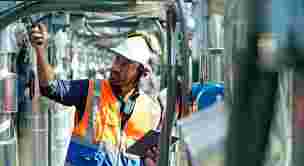Construction Safety: Why Risk Assessments are Crucial for Success
In the fast-paced world of construction, safety is not just a regulatory requirement—it's a cornerstone of a successful project. Whether you're building a small residential home or managing a large infrastructure development, ensuring the well-being of your workers and stakeholders must come first. One of the most effective ways to achieve this is through comprehensive risk assessments.

What is a Risk Assessment?
A risk assessment is a systematic process used to identify potential hazards on a construction site, evaluate the severity and likelihood of those hazards causing harm, and determine the appropriate control measures to mitigate risks. This involves examining everything from machinery and equipment to working at height, handling hazardous substances, and more.
By carrying out regular risk assessments, construction companies can anticipate problems before they happen, protect their workforce, and remain compliant with legal standards.
Why Risk Assessments Are Crucial in Construction
1. Protecting Workers and the Public
Construction sites are inherently dangerous environments, often filled with heavy machinery, sharp tools, unstable structures, and electrical hazards. Conducting risk assessments ensures that potential dangers are identified early, allowing for proper safety protocols to be implemented. This proactive approach drastically reduces the likelihood of accidents, injuries, and even fatalities.
Furthermore, construction projects often take place in areas accessible to the public. Risk assessments help manage these external risks, safeguarding not only employees but also passers-by and neighbouring residents.
2. Legal Compliance
UK law requires employers to manage health and safety risks under various regulations, including the Health and Safety at Work Act 1974 and the Construction (Design and Management) Regulations 2015. Failure to carry out proper risk assessments can result in severe penalties, legal action, and damage to a company’s reputation.
Documenting risk assessments demonstrates due diligence and shows regulators and clients that your company prioritizes safety. It’s an essential part of staying compliant and avoiding costly litigation.
3. Improving Operational Efficiency
A safe construction site is an efficient one. When workers feel secure, they are more focused and productive. Accidents and near misses often lead to delays, investigations, and additional costs. By minimizing these disruptions through risk assessments, construction managers can keep projects on track and within budget.
Identifying hazards also helps streamline operations. For example, rearranging a workspace to reduce trip hazards or implementing better signage can improve workflow and reduce downtime.
4. Reducing Costs in the Long Run
While conducting risk assessments requires an investment of time and resources, it pays dividends in the long run. Injuries can result in compensation claims, increased insurance premiums, and lost man-hours. Preventing accidents through early identification and management of risks is far more cost-effective than dealing with their aftermath.
Additionally, effective safety practices can lead to lower insurance premiums, as providers often reward companies that demonstrate strong health and safety records.
5. Enhancing Company Reputation
Clients, contractors, and employees alike want to work with companies that take safety seriously. Having a solid risk assessment procedure in place shows that your business is professional, reliable, and committed to protecting its people. This can help secure future contracts and attract top talent in a competitive market.
A good reputation for safety is especially important in regions like Hampshire and Hertfordshire, where the construction industry is growing and local regulations are being more closely scrutinized. Collaborating with reputable Health and Safety in Hampshire and Health and Safety in Hertfordshire consultants ensures your practices meet regional expectations and build community trust.
Key Components of a Construction Risk Assessment
A thorough risk assessment should cover:
-
Hazard Identification: Recognizing anything that may cause harm.
-
Risk Evaluation: Assessing the likelihood and severity of harm.
-
Control Measures: Implementing solutions to eliminate or reduce risks.
-
Documentation: Recording findings and updating them regularly.
-
Training and Communication: Ensuring everyone on site understands the risks and their responsibilities.
How Often Should Risk Assessments Be Done?
Risk assessments should be an ongoing process, not a one-time activity. They should be reviewed regularly, especially when:
-
A new task or process is introduced
-
Significant changes occur on-site
-
New equipment or materials are used
-
An incident or near-miss takes place
Regular reviews ensure that the safety plan evolves with the project and continues to address new and emerging hazards.
Final Thoughts
Risk assessments are the backbone of construction site safety. They help protect lives, ensure legal compliance, improve productivity, and enhance a company’s reputation. No matter the size or scope of a project, taking a proactive approach to risk assessment is a smart investment in the success and sustainability of your business.
Whether you're operating in bustling urban centres or quieter regions like Hampshire and Hertfordshire, understanding and implementing effective risk assessments is key. Partnering with local experts in Health and Safety Hampshire or Health and Safety Hertfordshire can provide the tailored guidance you need to keep your site safe and compliant.
In construction, success isn’t just measured in square metres built—it’s also measured in lives protected.




